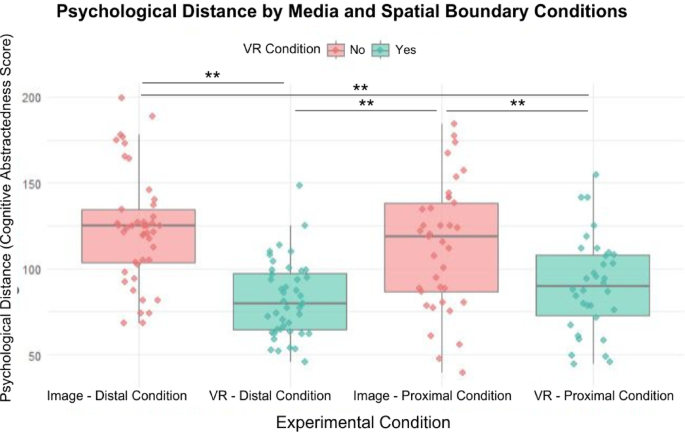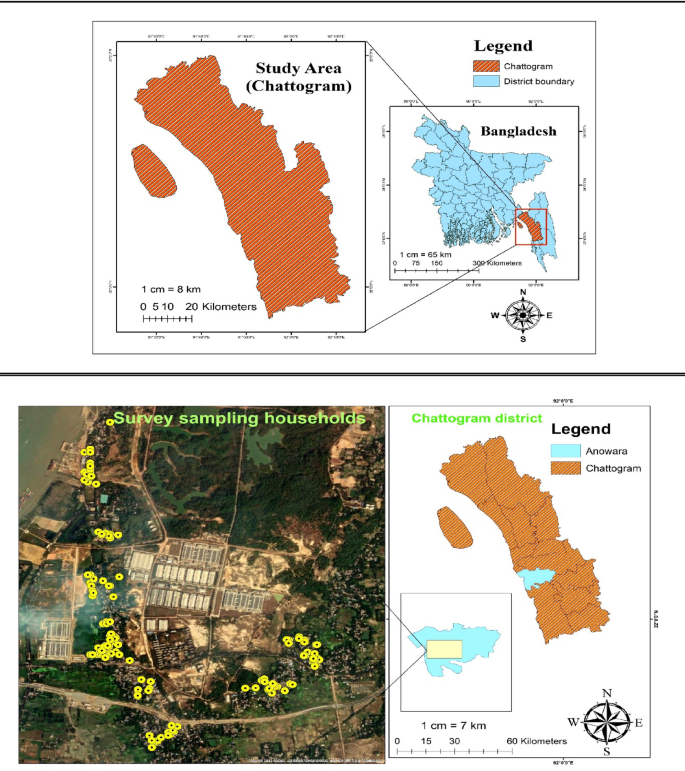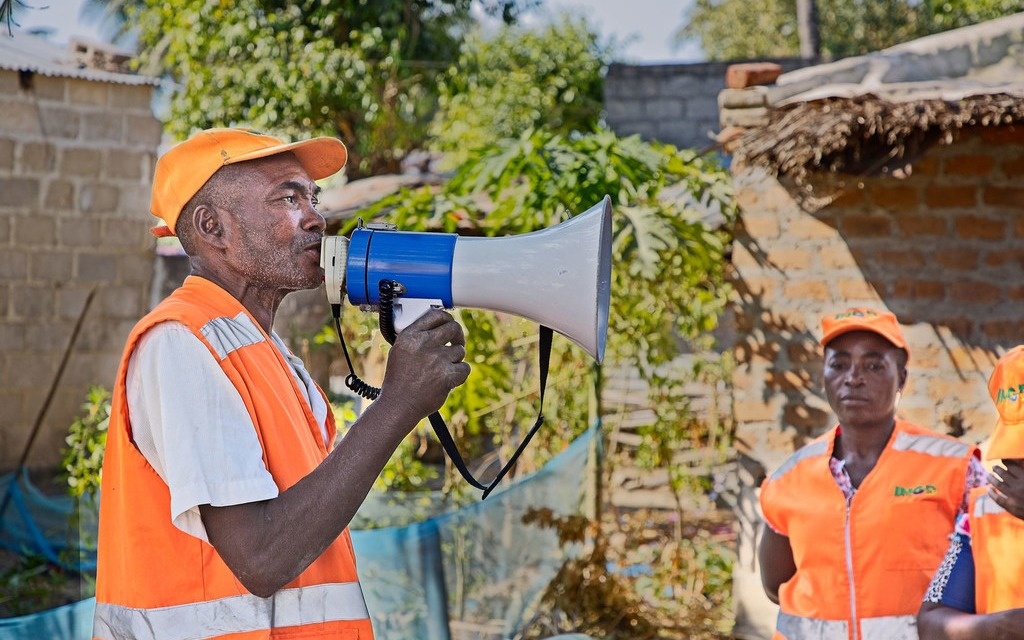Executive Summary
A study was conducted to evaluate the efficacy of virtual reality (VR) as a tool for enhancing public engagement with climate change, a critical component for achieving Sustainable Development Goal 13 (Climate Action). The research examined how immersive VR experiences, compared to static images, could reduce psychological distance to climate-affected locations, thereby influencing emotions and risk perceptions. The findings indicate that VR significantly reduces psychological distance, particularly for remote locations. This reduction fosters adaptive eco-emotions, such as increased frustration and decreased indifference towards climate change, and heightens risk perceptions. These outcomes are vital for mobilizing the public support needed to advance the 2030 Agenda for Sustainable Development. The study confirms VR’s potential as a powerful communication and educational tool to make the global climate crisis feel more immediate and personally relevant, thereby supporting SDG 4 (Quality Education) and SDG 13.
Introduction: Aligning Climate Communication with Sustainable Development Goals
Achieving Sustainable Development Goal 13 (Climate Action) is contingent upon widespread public engagement, which remains limited despite overwhelming scientific evidence. A primary obstacle is psychological distance, where the impacts of climate change are perceived as remote in time, space, and social relevance. This report details a study on leveraging immersive technologies to overcome this barrier, aligning with the broader objectives of the 2030 Agenda.
The Challenge of Psychological Distance to SDG 13 (Climate Action)
Psychological distance diminishes the perceived urgency of climate change, hindering the collective action required by SDG 13. This phenomenon is understood through two frameworks:
- Discounting Principle: Future and distant consequences are valued less than immediate ones, leading to inaction.
- Construal Level Theory: Psychologically distant events are represented abstractly, reducing their emotional impact. This distance manifests in four dimensions:
- Hypothetical Distance: Uncertainty about an event’s occurrence.
- Temporal Distance: Perceiving an event in the distant future.
- Spatial Distance: Perceiving an event as happening far away geographically.
- Social Distance: Believing an event will not affect one’s own social group.
Overcoming these dimensions of distance is essential for fostering the global citizenship and responsibility needed to address climate change and its impacts on communities, as outlined in SDG 11 (Sustainable Cities and Communities).
Leveraging Technology for SDG 4 (Quality Education) and SDG 11 (Sustainable Cities)
Effective communication is paramount. Traditional methods, such as statistical reports, often fail to convey the urgency of climate threats. Immersive technologies like Virtual Reality (VR) offer a novel approach to climate education, directly supporting SDG 4 (Quality Education), particularly Target 4.7, which calls for education for sustainable development. By simulating direct experience, VR can:
- Make abstract climate data tangible and personally relevant.
- Foster empathy and emotional connection (place attachment) to distant locations vulnerable to climate impacts, such as flooding in urban areas, a key concern for SDG 11.
- Promote pro-environmental behaviors and support for climate policies.
This study investigates VR’s potential to bridge the gap between knowledge and action by leveraging its key affordances of presence (feeling physically immersed) and plausibility (perceiving the virtual experience as real).
Research Objectives in the Context of SDGs
This report addresses the following research questions, framed within the context of advancing the Sustainable Development Goals:
- Can VR, more effectively than static images, reduce psychological distance to remote climate-affected locations, thereby increasing engagement with SDG 13?
- Does VR elicit adaptive eco-emotions (e.g., frustration, hope) that motivate climate action, while minimizing non-adaptive emotions (e.g., anxiety, helplessness)?
- How does political orientation moderate VR’s effectiveness, and what are the implications for building the broad consensus required by SDG 16 (Peace, Justice and Strong Institutions) and SDG 17 (Partnerships for the Goals)?
Key Findings: VR’s Impact on SDG-Related Perceptions
The study, involving 163 student participants, yielded significant results demonstrating the value of VR in promoting climate change awareness and engagement. Participants experienced a news story about flooding in either a proximal or distant location via immersive VR or static images.
Reducing Psychological Distance to Climate Impacts (SDG 13)
A primary finding was the significant main effect of VR on reducing psychological distance. Participants in the VR condition perceived climate events as less abstract and more concrete compared to those who viewed static images. This effect was particularly pronounced for distant locations, indicating that VR can make global climate challenges feel local and immediate, a crucial step in motivating action for SDG 13.
Fostering Emotional Engagement and Reducing Indifference (SDG 13, SDG 16)
VR demonstrated a significant impact on participants’ emotional responses to climate change:
- Climate Indifference: VR users reported significantly less indifference, especially when viewing a distant location. Reducing apathy is fundamental to building the public will needed to implement robust climate policies.
- Climate Frustration: VR users reported higher levels of climate frustration, an adaptive emotion known to correlate with pro-environmental action. By transforming abstract concern into an activating emotion, VR can help drive the behavioral changes necessary for SDG 13.
- Place Attachment: VR created a stronger sense of emotional connection to the viewed locations, regardless of distance. This fostering of place attachment can cultivate a sense of global responsibility for protecting vulnerable ecosystems and communities.
Enhancing Risk Perception and Storytelling (SDG 4, SDG 13)
The immersive experience translated into heightened awareness and engagement:
- Risk Perceptions: VR exposure led to higher perceived risks associated with climate change, particularly for distant events. Accurate risk perception is a prerequisite for supporting adaptive measures under SDG 11 and mitigation efforts under SDG 13.
- Climate Storytelling: Participants in the VR condition wrote significantly longer and more invested narratives about climate change impacts. This indicates a deeper cognitive and emotional processing of the information, aligning with the educational goals of SDG 4.
The Moderating Role of Political Ideology (SDG 16, SDG 17)
Political orientation was a significant moderator for self-reported emotions and risk perceptions, with the effects of the intervention being stronger among liberal-identifying participants. However, political ideology did not moderate the effect on storytelling investment, a behavioral measure of engagement. This suggests that while VR may not immediately bridge ideological divides on attitudes, it can foster deeper engagement across the political spectrum. This finding is critical for developing communication strategies that can build the broad-based coalitions necessary to achieve SDG 16 and SDG 17.
Discussion and Implications for Sustainable Development
VR as a Tool for Advancing the 2030 Agenda
The findings of this report underscore the significant potential of VR as an intervention to accelerate progress on the Sustainable Development Goals. By making distant climate impacts feel psychologically close, VR can be a powerful tool for:
- Policymakers and NGOs: To build public support for climate policies and initiatives related to SDG 13 and SDG 11 by illustrating the tangible consequences of inaction.
- Educators: To create compelling learning experiences that fulfill the mandate of SDG 4 by equipping learners with the knowledge and motivation to contribute to sustainable development.
- Journalists and Communicators: To move beyond statistics and tell immersive stories that foster empathy and a sense of shared responsibility for our planet.
The study demonstrates that VR’s capacity to induce presence and plausibility can activate adaptive emotions and increase risk perception, turning passive audiences into engaged citizens. The finding that VR enhances storytelling engagement across political orientations is particularly promising, suggesting a pathway to depolarize climate communication and foster the collaborative spirit of SDG 17.
Limitations and Future Directions for SDG-Focused Research
While promising, this study has limitations that present avenues for future research. The study was conducted with a student population within the United States. Future work should explore these effects across diverse demographics and international contexts, particularly in developing nations most vulnerable to climate change, to understand how VR can be deployed globally to support the SDGs. Further research is also needed to assess the long-term behavioral impacts of such interventions and to explore narratives that inspire hope and collective efficacy, which are essential for sustained climate action.
Conclusion
Virtual reality is more than a novel technology; it is a powerful communication medium with the potential to transform how we perceive and respond to global challenges like climate change. This report provides evidence that VR can effectively reduce the psychological distance that fosters climate indifference, making the abstract urgent and the distant personal. By fostering emotional connection, enhancing risk perception, and encouraging deeper engagement, VR can serve as a vital tool in the global effort to achieve SDG 13 (Climate Action) and the broader 2030 Agenda for Sustainable Development.
Analysis of Sustainable Development Goals in the Article
1. Which SDGs are addressed or connected to the issues highlighted in the article?
-
SDG 13: Climate Action
- The entire article is centered on addressing the challenges of climate change communication and public engagement. It explicitly states, “Despite mounting evidence of climate change, public engagement remains limited, partly due to psychological distance.” The study’s primary goal is to find effective interventions to “promote climate action” and alter “climate emotions and risk perceptions.” This directly aligns with the overarching goal of SDG 13, which is to take urgent action to combat climate change and its impacts.
-
SDG 4: Quality Education
- The study explores an innovative educational method using virtual reality (VR) to enhance understanding and awareness of a complex global issue. The experiment was conducted with university students in a course about VR, positioning the intervention as a learning experience. The article notes that immersive experiences can “foster understanding from new perspectives, and even stimulate emotional connections to unfamiliar environments.” This connects to SDG 4’s aim to ensure inclusive and equitable quality education and promote lifelong learning opportunities for all, especially in the context of education for sustainable development.
-
SDG 9: Industry, Innovation, and Infrastructure
- The research focuses on the application of a specific technological innovation—virtual reality—to address a societal problem. The article investigates how VR’s “psychological affordances: presence and plausibility” can be leveraged for climate communication. It highlights the use of a specific platform, FlyVR, which is “powered by Google’s 3D Maps Tiles.” This aligns with SDG 9’s emphasis on fostering innovation and upgrading the technological capabilities of various sectors to achieve sustainable development.
2. What specific targets under those SDGs can be identified based on the article’s content?
-
Target 13.3: Improve education, awareness-raising and human and institutional capacity on climate change mitigation, adaptation, impact reduction and early warning.
- The study is a direct attempt to improve awareness-raising on climate change impacts. By using VR to reduce “psychological distance,” the intervention aims to make the risks of climate change feel more immediate and tangible, thereby increasing public engagement. The article concludes that its findings “carry significant implications for climate communication efforts by policymakers, journalists, and organizations aiming to highlight climate change as both a societal and individual threat,” which directly relates to building human capacity for understanding and responding to climate change.
-
Target 4.7: By 2030, ensure that all learners acquire the knowledge and skills needed to promote sustainable development, including, among others, through education for sustainable development and sustainable lifestyles…
- The article’s intervention is a form of “education for sustainable development.” It uses VR to help learners (university students) acquire knowledge and an emotional connection to climate change, a key topic in sustainable development. The study’s success in fostering “adaptive emotions that enhance climate risk perceptions” and encouraging “greater investment in climate storytelling” demonstrates a method for equipping learners with the cognitive and emotional skills needed to engage with and promote sustainability.
-
Target 9.5: Enhance scientific research, upgrade the technological capabilities of industrial sectors in all countries… and encourage innovation.
- This study is a piece of scientific research that explores and validates the technological capabilities of VR as a communication tool. The article’s core purpose is to “examine how virtual reality (VR) can reduce psychological distance to locations affected by climate change.” By comparing VR to static images and demonstrating its superior effectiveness in eliciting emotional responses and altering risk perceptions, the research contributes to understanding how to upgrade communication technologies to encourage innovation in public engagement and education.
3. Are there any indicators mentioned or implied in the article that can be used to measure progress towards the identified targets?
-
Indicators for Target 13.3 (Climate Change Education and Awareness):
- Climate Risk Perceptions: The article explicitly measures this using a 9-item index. An increase in perceived risk, as observed in the VR condition (“those experiencing a climate change news story in VR reported higher risk perceptions”), serves as a direct indicator of heightened awareness of climate change impacts.
- Climate Emotions (Indifference, Frustration): The study uses a 0-100 sliding scale to measure various “eco-emotions.” A reduction in “climate indifference” and an increase in “climate frustration” (an adaptive emotion) are used as indicators of greater emotional engagement and concern, which are precursors to action.
- Psychological Distance: Measured through natural language processing, a reduction in psychological distance indicates that individuals perceive climate change as more concrete and personally relevant, a key goal of awareness campaigns. The study found VR “reduced psychological distance and heightened climate frustration.”
-
Indicators for Target 4.7 (Education for Sustainable Development):
- Climate Storytelling Investment: The article measures this by “counting the length of the story that participants wrote.” A longer story indicates deeper engagement and a greater ability to articulate the human impacts of climate change, reflecting the acquisition of communication skills related to sustainable development.
- Place Attachment: Assessed with a 5-point Likert scale, this indicator measures the emotional bond individuals form with a location. The finding that “VR created more place attachment” suggests the educational tool was successful in fostering a sense of connection and personal relevance, which is crucial for motivating pro-environmental behavior.
-
Indicators for Target 9.5 (Scientific Research and Innovation):
- Spatial Presence: Measured with a 3-item scale, this indicator assesses the technological effectiveness of the VR environment in creating a sense of “being there.” The result that “VR creates more spatial presence compared to 2D images” is a direct measure of the technology’s advanced capability for immersion, which is central to the study’s hypothesis.
- Comparative Efficacy of VR vs. Static Images: The entire experimental design, which compares outcomes between VR and static image groups, serves as an indicator of the innovative technology’s added value. The findings that VR was more effective in reducing indifference, increasing frustration, and enhancing risk perceptions for distant locations demonstrate its upgraded capability as a communication tool.
4. Summary Table of SDGs, Targets, and Indicators
| SDGs | Targets | Indicators Identified in the Article |
|---|---|---|
| SDG 13: Climate Action | 13.3: Improve education, awareness-raising and human and institutional capacity on climate change mitigation, adaptation, impact reduction and early warning. |
|
| SDG 4: Quality Education | 4.7: Ensure that all learners acquire the knowledge and skills needed to promote sustainable development. |
|
| SDG 9: Industry, Innovation and Infrastructure | 9.5: Enhance scientific research, upgrade the technological capabilities… and encourage innovation. |
|
Source: nature.com







